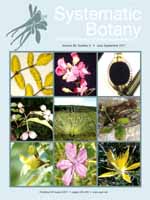
Species Relationships and Farina Evolution in the Cheilanthoid Fern Genus Argyrochosma (Pteridaceae)
No abstract available
